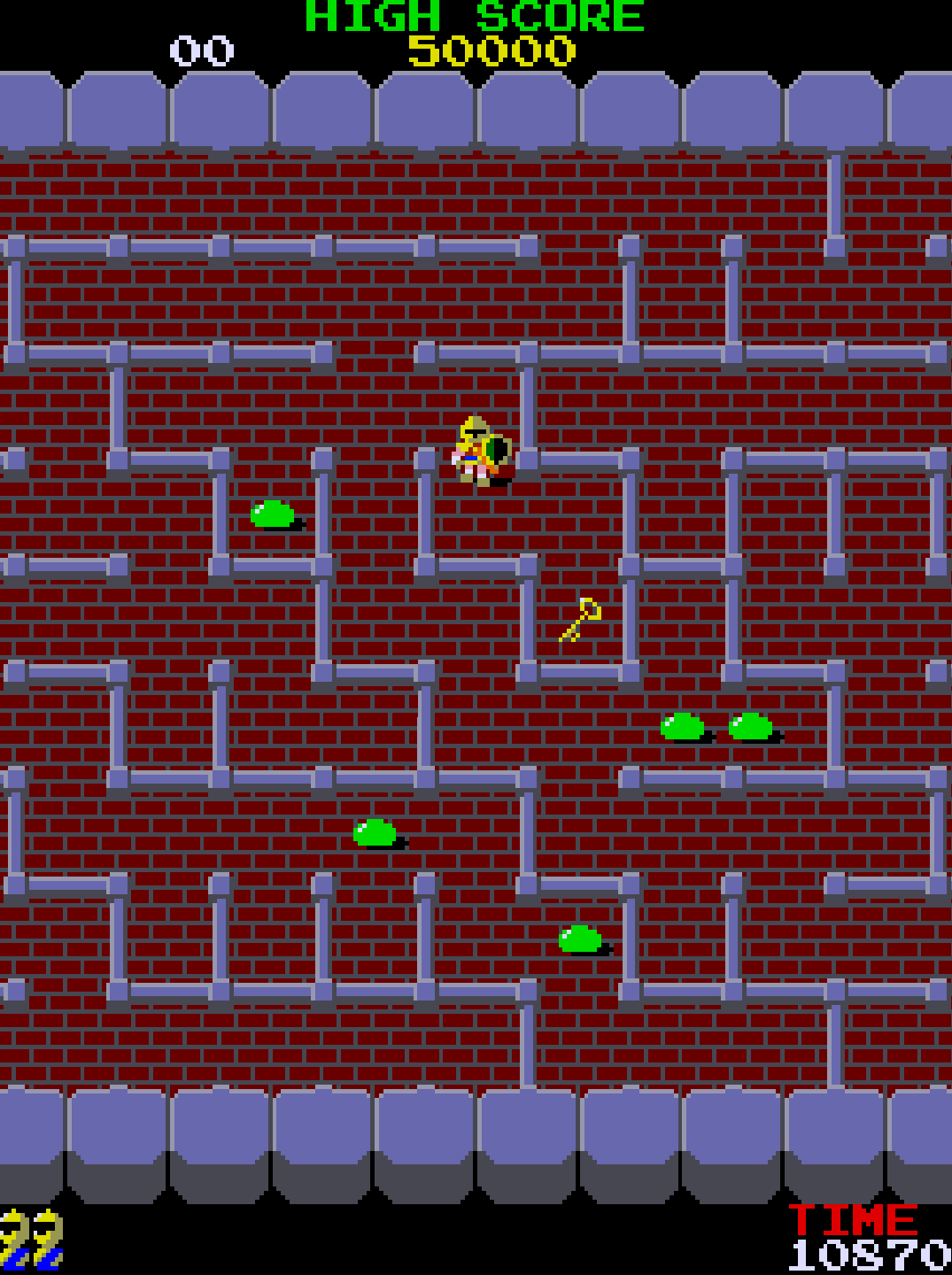Introduction
Released in 1984, The Tower of Druaga is a top-down maze action-adventure game developed by Namco. Combining action gameplay with hidden puzzles, it became a landmark title in Japan and inspired generations of RPGs and dungeon crawlers.
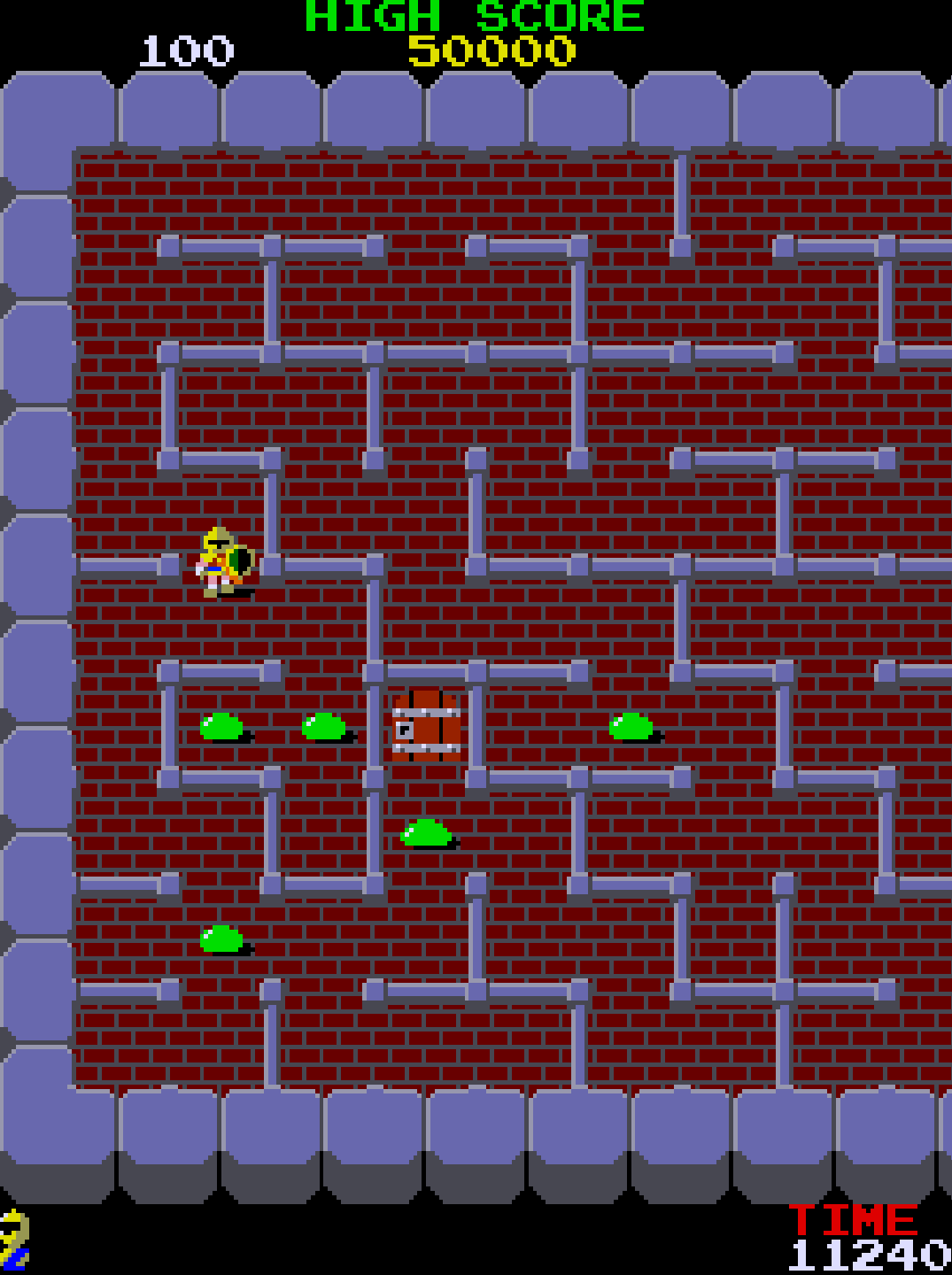
Development and History
- Developer: Namco
- Publisher: Namco
- Release Date: 1984
- Hardware: Namco Pac-Land hardware
Created by Masanobu Endō, who previously worked on Xevious, The Tower of Druaga was designed to challenge arcade players with a longer, more exploration-focused experience. Endō wanted to incorporate mythological themes and a sense of discovery, leading to an unprecedented number of secrets and hidden items. The game’s 60-floor tower became notorious for its difficulty and reliance on memorization.
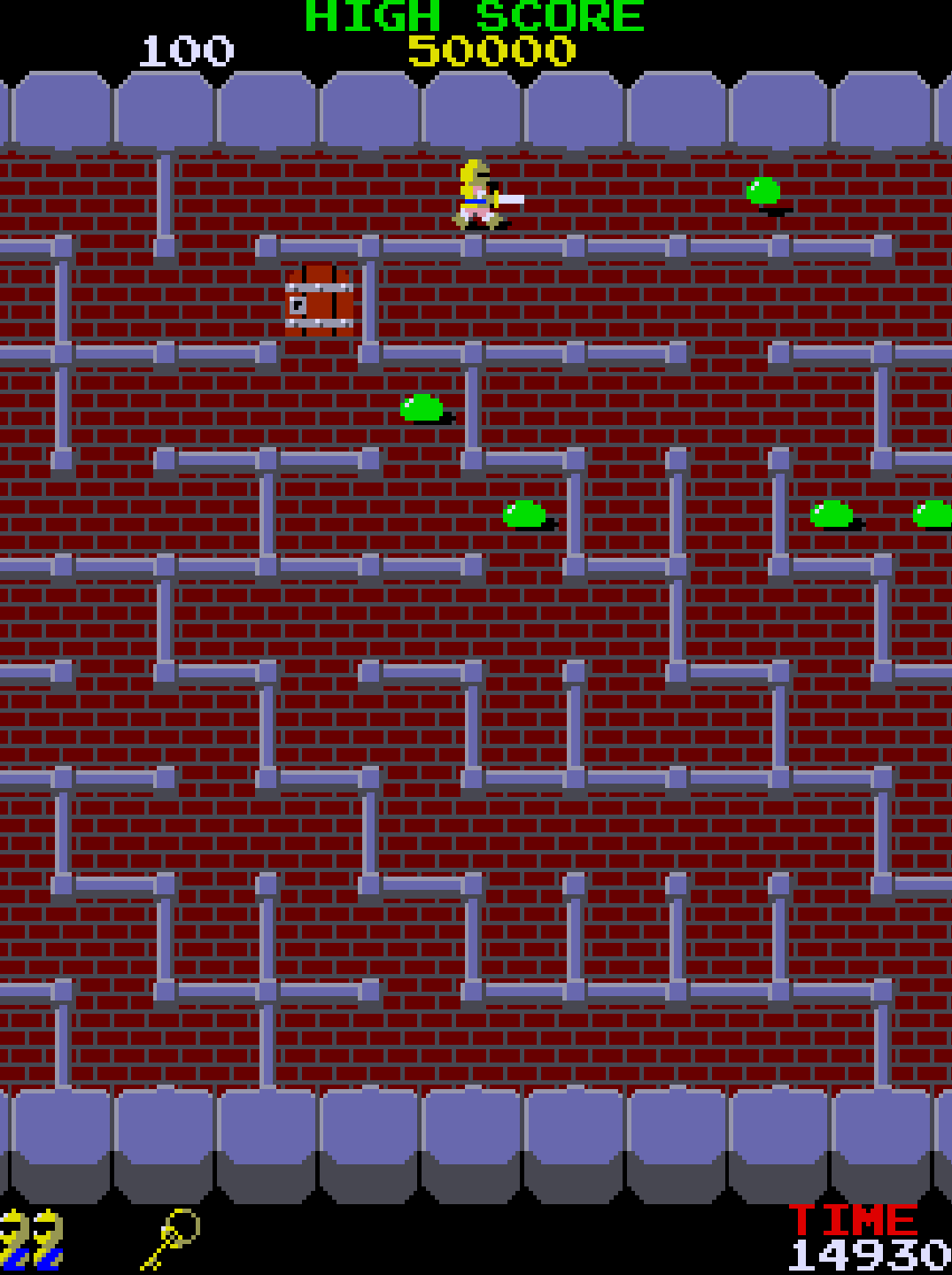
Gameplay Video
Gameplay and Mechanics
Players control the knight Gilgamesh as he ascends the tower to rescue the maiden Ki and defeat the demon Druaga.
Key gameplay elements:
- Maze Exploration: Navigate single-screen floors filled with enemies and traps
- Hidden Items: Discover secret treasures needed to progress
- Sword Combat: Attack monsters with a sword while using a shield to block projectiles
- Timer: Clear each floor before time runs out
- Progression: Each level increases in complexity and enemy strength
Without finding certain hidden items, players could become permanently stuck later in the game.
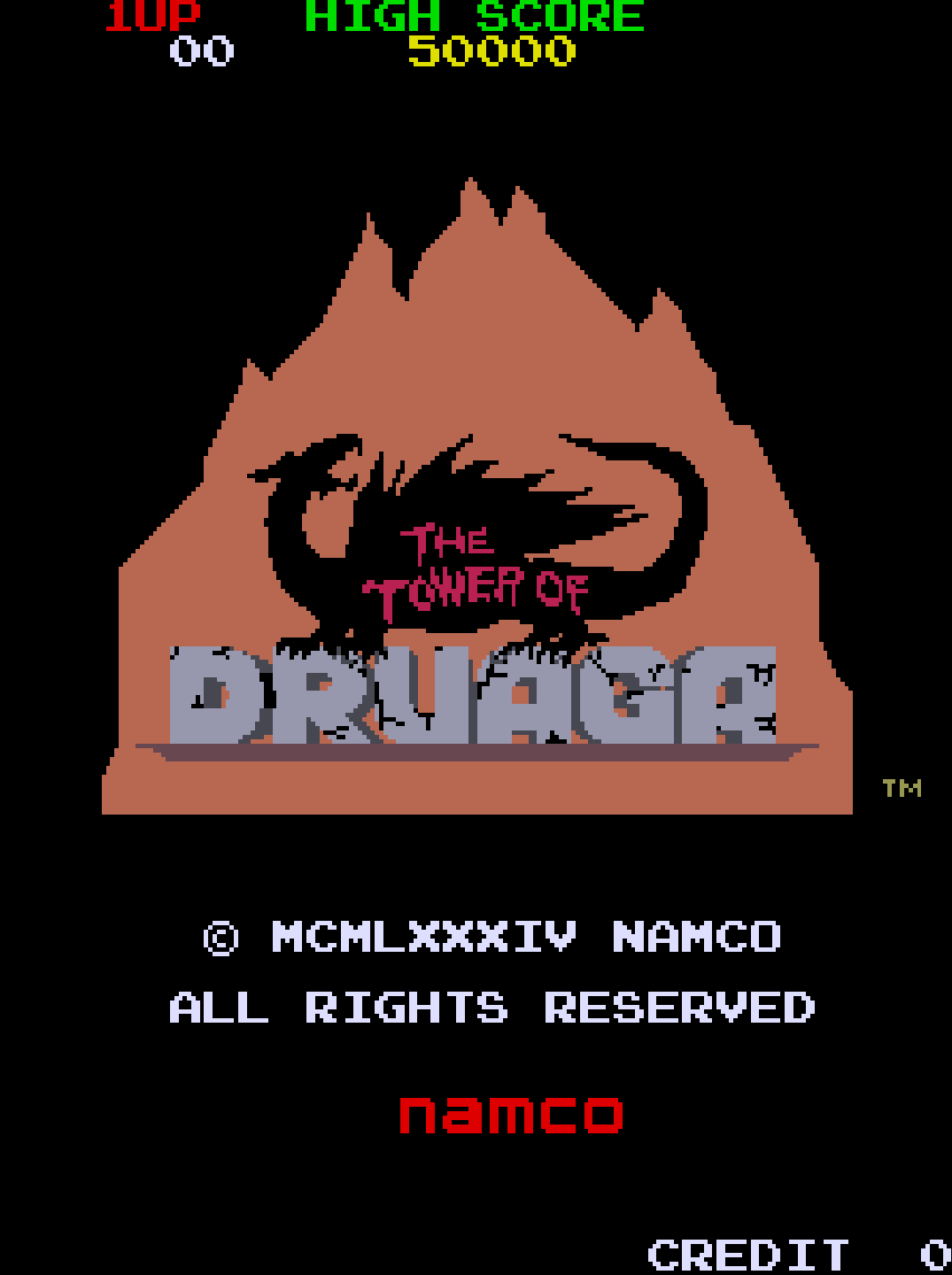
Cultural Impact and Legacy
- Hugely influential in Japan, inspiring early RPGs like Hydlide and Ys
- Spawned sequels including The Return of Ishtar and The Blue Crystal Rod
- Led to anime adaptations and a long-running legacy within Namco
- Remembered as a pioneering action-RPG hybrid that helped shape the genre
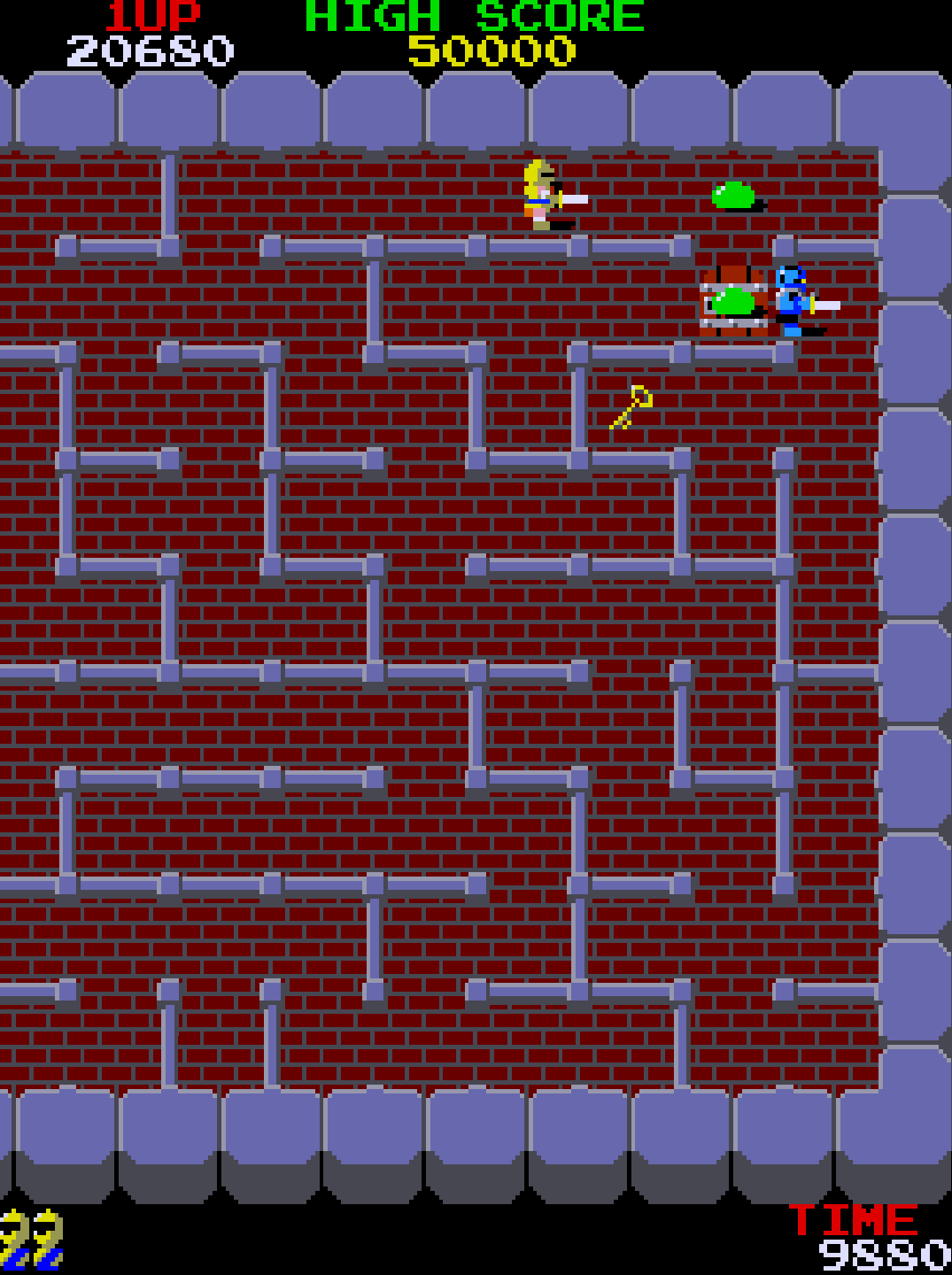
Fun Facts
- The game’s name references the Babylonian king Gilgamesh
- Many players relied on magazines and word of mouth to learn secrets
- The soundtrack was composed by Junko Ozawa
- The Tower of Druaga is referenced in the Tales RPG series and other Namco games
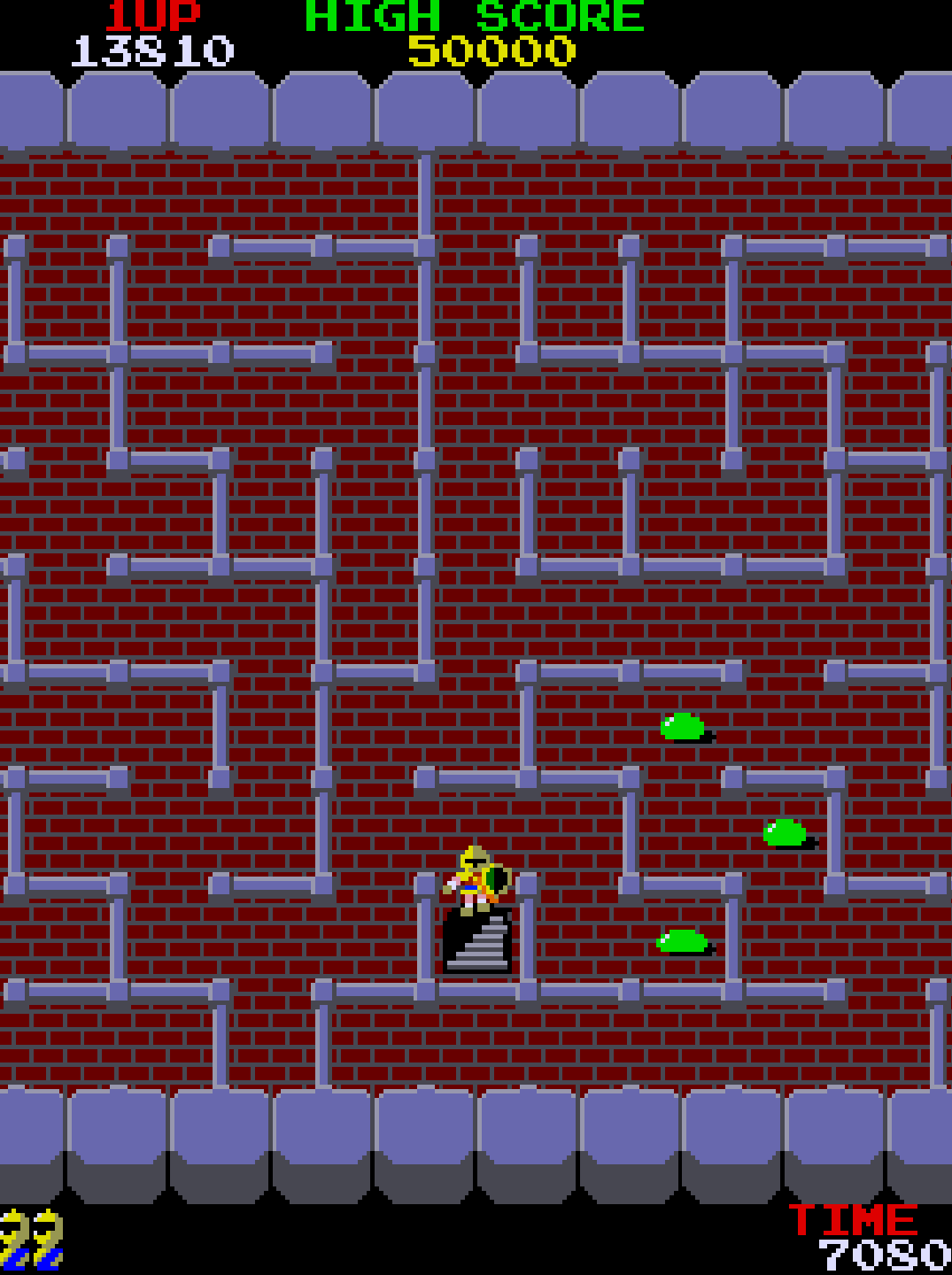
Conclusion
The Tower of Druaga challenged arcade conventions by blending fast action with hidden-depth puzzle solving. Its ambitious design laid the groundwork for many adventure and RPG elements that became standard in Japanese games. Decades later, it remains a touchstone for the evolution of dungeon exploration.

